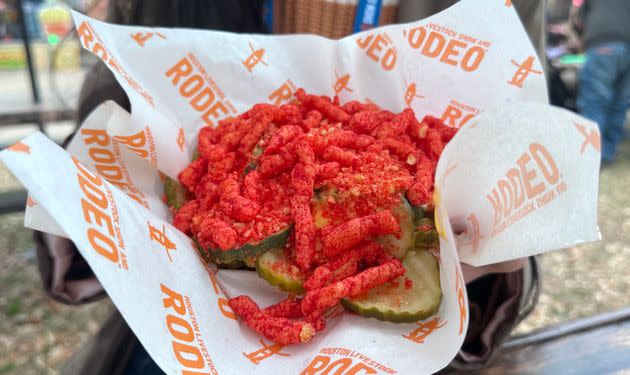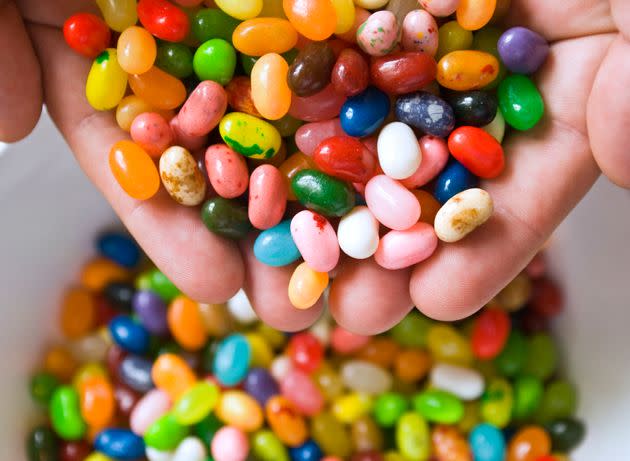
How worried should you be about your Flamin’ Hot Cheetos?
A lawmaker in California recently introduced a proposal to ban foods from schools if they contain artificial colors, including Blue 1, Blue 2, Green 3, Red 40, Yellow 5 and Yellow 6, as well as titanium dioxide. This could apply to sports drinks, breakfast cereals, chips and candy. Separately, California Governor Gavin Newsom recently signed a bill banning the sale of foods and beverages containing certain ingredients, including Red No. 3.
In the United States, the Food and Drug Administration is responsible for conducting safety tests and issuing guidelines to food manufacturers that indicate which dyes are and are not safe for consumption. Although experts say that the use of food dyes is generally safe, there are growing concerns about consuming these dyes. Outside the United States, for example, further measures have been implemented. The Guardian reported that in the European Union and the United Kingdom, “foods containing synthetic dyes must carry warnings that the ingredients ‘may affect the activity and attention of children.'”
“The use of dyes and colorants in food is neither new nor a secret in the industry; however, consumers are still unaware of the extent to which they are used,” Trevor Craig, corporate director of technical training and consulting at Microbac Laboratories, told HuffPost. “Many studies have shown that dyes are safe for consumption, and those with negative results are usually banned.”
Still, some studies have linked synthetic food dyes to health problems such as childhood hyperactivity and cancer. And people want to know where their food comes from.
“Because food and food coloring are widely consumed, it is interesting to understand what role, if any, they play in these public health problems,” says Bryan Hitchcock, senior science and technology officer at the Institute of Food Technologists.
“The vast majority of safety data in this area indicate a low risk for the general population.”
What are artificial food colors made of?
Color additives have been used in food for thousands of years. Ancient peoples used colorants from paprika, turmeric, saffron, iron, lead oxides and other sources in food, medicine, cosmetics and wine, according to the FDA.
The first synthetic organic dye, mauve, was discovered in 1856, and soon similar artificial colors were used in foods. In the 1880s, the federal government began to monitor color additives. Butter and cheese were among the first foods allowed to contain artificial colors.
Many of the food colorings used today have been approved for decades, Hitchcock said.
“The United States has a strong regulatory framework to evaluate and ensure the safety of all of these ingredients, including FDA-certified food colors,” he said. “As the FDA continues to improve the framework, consumers can be confident that the U.S. food supply is safe.”


What are the most common food colorings?
The FDA classifies its approved food color additives as “certified” or “exempt”. Both groups “must meet the same safety standards before being approved for use in food,” the agency explains.
The category “exempt from certification” is used for dyes and pigments from natural sources such as vegetables, minerals or animals. For example, beta-carotene is used for yellow or orange coloring, dried beets for bluish-red or brown, And Annatto extract from the seeds of the achiote plant for yellow.
“Certified color additives” are synthetically produced and used to “impart an intense, consistent color,” according to the FDA. They are typically less expensive than natural dyes.
Here are the Color additives currently permitted for use in food:
-
Blue No. 1used in beverages, frosting, icing, cereal, and frozen treats such as popsicles.
-
Blue No. 2is used in baked goods, cereals, yoghurt, ice cream and snacks.
-
Green No. 3used in drink mixers, baked goods, cereals, sorbet and ice cream.
-
Red No. 3used in candy, beverages, cereals, frozen dairy desserts, popsicles, frosting, glaze and ice cream cones.
-
Red No. 40is used in cereals, beverages, gelatin, pudding, dairy products and confectionery.
-
Yellow No. 5is used in spices, baked goods, yoghurt, cereals, snacks, drinks and sweets.
-
Yellow No. 6used in cereals, snacks, baked goods, gelatin, dessert powder, crackers, sauces and beverages.
A few others are approved for specific usesOrange B is approved exclusively for hot dog and sausage casings, Citrus Red No. 2 for coloring orange peels.
The FDA also claims Online lists of colour additives whose use is no longer permitted or whose use has been restricted.
Are food coloring additives safe?
For decades, researchers have been studying the connection between food coloring and hyperactivity in children, according to the International Food Information CouncilWhile some Research has shown that eliminating artificial food coloring from their diet improved symptoms of attention deficit/hyperactivity disorder, The results were mixed in other findings.
“Although (food dyes) may pose potential risks to children, the studies suggest that sensitivity varies and certain groups are at higher risk due to increased exposure,” Craig said, adding that more up-to-date research is needed on the topic.
It has also been suggested that some food dyes Cause cancerbut most research on this topic has been done on animals and the evidence is inconclusive. However, it has been shown that Red 3 increase the risk of thyroid tumors in rats – and the FDA banned the dye In 1990, its use in cosmetics and topical medications was banned. However, the dye is still used in foods such as some candies and popsicles, but must be listed on food labels.
“With ongoing public health problems like cancer, child development and more, there is significant research interest in understanding the causes,” Hitchcock said. “To explore possible causes, you have to look at repeated exposure to different substances from the environment we live in.”
Food dyes may pose a health risk to certain populations, he said, but more research is needed to determine what levels of exposure pose the greatest danger. For most people, the risk is low, especially when dyes are consumed as part of a healthy, balanced diet.
Another potential health concern related to dyes is their frequent use in highly processed foods such as soft drinks, candy and snack foods, Craig noted. These foods are linked to dozens of health problems, including heart disease, cancer, diabetes and mental disorders, according to recent studies. Research published in the BMJ.
Should you be concerned about consuming food coloring?
“Certainly some dyes have been shown to be harmful, but that doesn’t mean all dyes are,” Craig said.
The FDA maintains a list of approved (and unapproved) ingredients and their safety, he added. And in addition to conducting safety tests, it also issues guidelines for food manufacturers on distribution, processing, ingredients and more.
Food coloring is safe for most people, Craig said. Many chemicals are dangerous in high concentrations, but color additives are usually consumed in small amounts.
Food safety laws are based on science and are informed by the consumer to ensure a safe food supply, Hitchcock added. “This includes approving new ingredients, monitoring existing ingredients and banning ingredients with an unacceptable risk,” he said.
Nevertheless, it is “great that people are asking questions and seeking a deeper understanding” about the composition and origin of their food, he noted.

